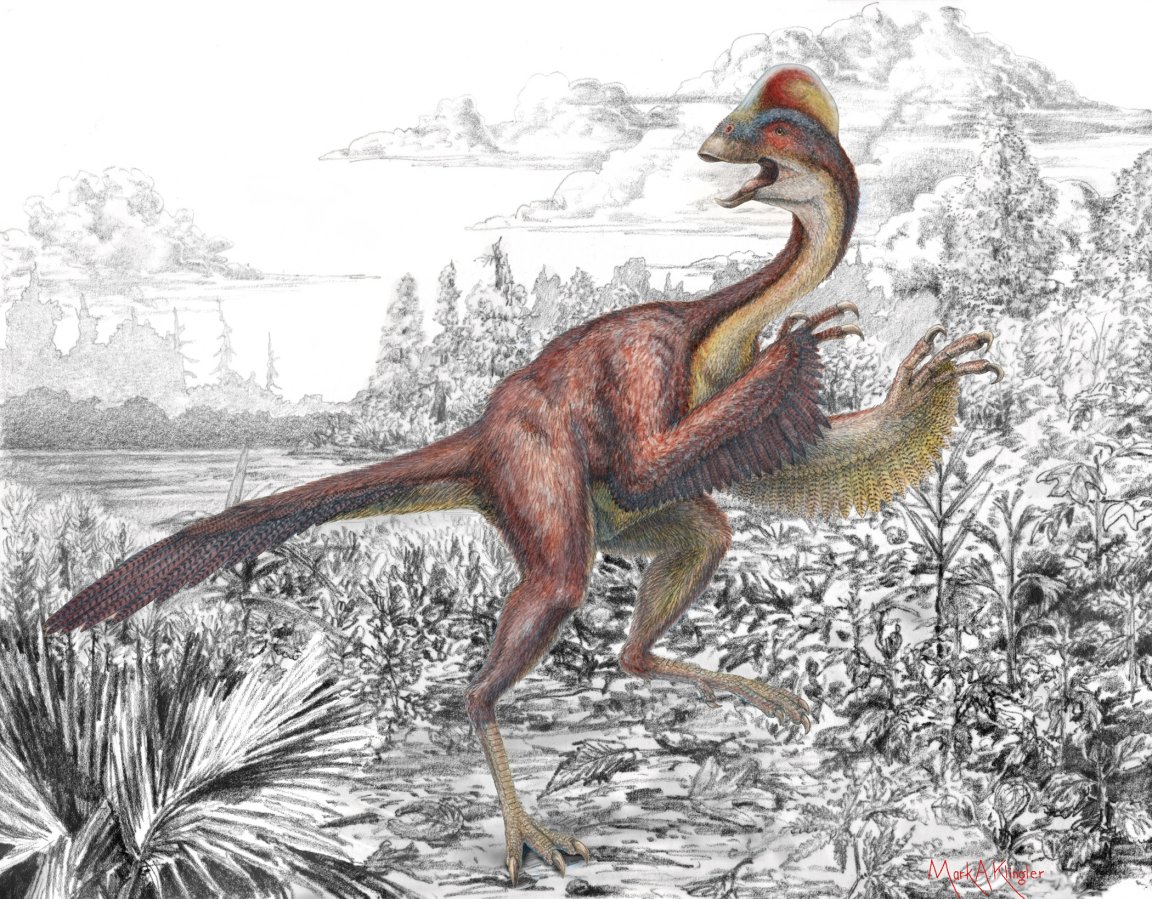

Throughout history, Earth has been home to a number of strange and interesting creatures. This new discovery is, perhaps, one of the most interesting. Today, scientists unveiled the discovery of a new bird-like dinosaur affectionately named the “chicken from hell” (okay, so maybe the name isn’t all that affectionate.
This fascinating creature is nothing like the familiar birds that populate farms across the globe. For starters, scientists estimate that this creature (officially dubbed Anzu wyliei) was about 500-pounds (226 kg). What’s more, they were about the same height as the average human, standing some 5 feet tall (1.5m), and were almost 11½ feet long (3.5 m). In the image, you can see the dinosaur’s rather impressive tail, which is somewhat larger than chickens of the present day.
Of course, giant chickens didn’t actually frolic with dinosaurs (sadly). The Anzu wyliei is really a giant raptor. The creature roamed the Dakotas along with the ever popular T. rex some 66 million years ago.
The beaked dinosaur’s name is derived from “Anzu,” after a bird-like demon in Mesopotamian mythology, and “wyliei” after a boy named Wylie, who is the dinosaur-loving grandson of a Museum trustee.
University of Utah biology postdoctoral fellow Emma Schachner explains the chicken reference by stating, “It was a giant raptor, but with a chicken-like head and presumably feathers. The animal stood about 10 feet tall, so it would be scary as well as absurd to encounter.” The study’s lead author, Matt Lamanna, goes on to say, “We jokingly call this thing the ‘chicken from hell,’ and I think that’s pretty appropriate.”

Ultimately, the Anzu is notble for more than just its strange appearance. The dinosaur is “one of the youngest oviraptorosaurs known, meaning it lived very close to the dinosaur extinction event” Schachner says. Moreover, Anzu wyliei provides paleontologists with their first good look at a dinosaur group that has been shrouded in mystery for almost a century. After 10 decades of searching, scientists have the fossils to show what these creatures looked like from virtually head to toe.
The researchers believe Anzu was an omnivore. This is partially because of the creatures sharp claws. The scientists state that it like spent its time eating vegetation, small animals, and perhaps eggs while living on a wet floodplain. Additionally, its jaws were tipped with a toothless beak, and its head sported a tall, rounded crest (kind of like a fancy, fancy helmet).